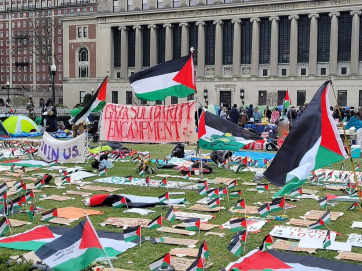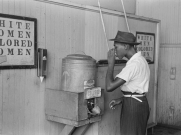“If you believe that Bowdoin’s doors should be open to the poor, then you should believe in financial aid. But the story’s changed, given our price point. If you believe that Bowdoin ought to be available to the middle class, then it’s important that you support financial aid. And, this will surprise you, if you believe that ‘the one percent’ should be able to come to Bowdoin, at the cost of the college today, for many people even in the one percent, we need to support those families, too.”
Barry Mills, fourteenth president of Bowdoin College, speaking to donors at the Scholarship Appreciation Luncheon, May 10, 2012.
During President Barry Mills’s inauguration address in October 2001, he laid out the “priorities” of his administration to the community of Bowdoin College. He listed three, including “access.” By “access,” President Mills meant providing financial aid to students who would not otherwise be able to afford to pay Bowdoin’s comprehensive fee. Access has indeed been a centerpiece of Mills’s administration. In 2008-2009, for instance, he led Bowdoin to adopt a new financial aid policy in which all aid provided by the college would be in the form of grants, not loans. President Mills saw this move as fulfilling Bowdoin’s commitment to “the common good.” And yet providing access has become an increasingly expensive prospect; Mills has had to contend with his own financial model. In the years since his inauguration, Bowdoin’s comprehensive fee has increased by a dramatic 62.8 percent.
When speaking about access, the language employed by President Mills can sometimes be denigrative of Bowdoin’s past efforts. For instance, on November 7, 2009, speaking at the 40th anniversary of the opening of the Russwurm House, named in honor of Bowdoin’s first black graduate, John Brown Russwurm (Class of 1825), President Mills listed “poor students” among those who Bowdoin had not in the past “opened the doors” to. But this goes against the historical record. In fact, according to historian David Allmendinger (Paupers and Scholars: The Transformation of Student Life in Nineteenth-Century New England), in 1829 a quarter of Bowdoin’s student body was “totally indigent.” In our tenth Preliminary of the Bowdoin Project, “Financial Aid at Bowdoin: A History,” we provide a brief overview of Bowdoin's past efforts to provide financial aid to poor students, in order to contextualize the efforts of the present.
* * *
Since September 2011, NAS has been conducting an in-depth, ethnographic study of Bowdoin College in Maine. We asked, “what does Bowdoin teach?” and examined Bowdoin’s formal curriculum, its residential and student life policies, and its co-curricular and extra-curricular activities. We have dedicated a page on our website to the Bowdoin Project. The full report will be published there in April. In the meantime, we will continue posting a series of Preliminaries which will provide context for the report.













